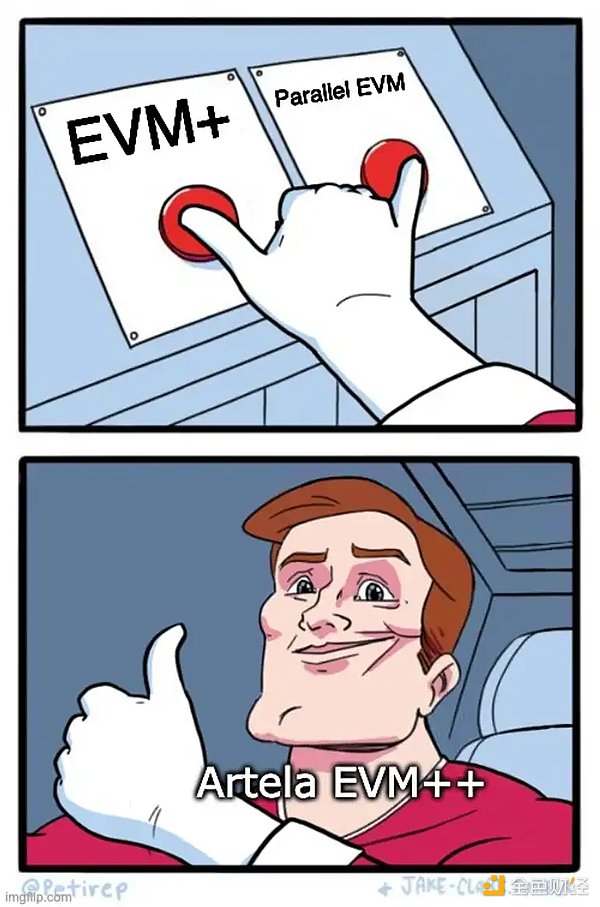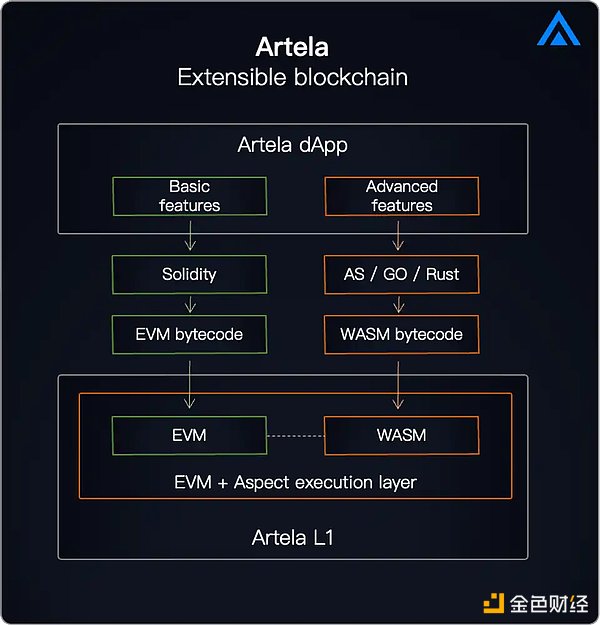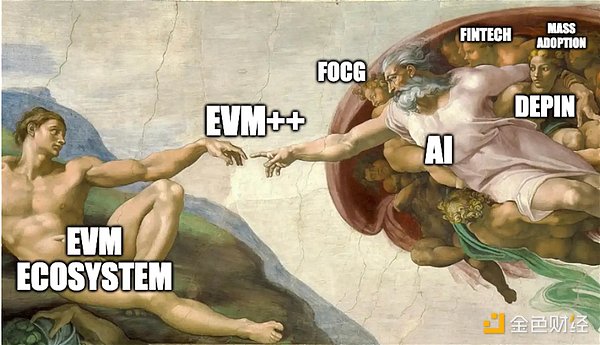Public chain Artela announced that it has entered the next stage of research and development: EVM++, which improves Artela network performance through parallel EVM and supports decentralization through the advanced design of elastic blocks. Mass adoption of chemical applications. Previously, the Artela public chain achieved an important milestone in ecological development, completing the construction of EVM+ features and launching a public test network. Through the EVM+WASM paradigm, developers are allowed to build on-chain expansion through Aspect programming, in AI+Crypto, full-chain games, and DeFi. There are breakthrough cases in security and other directions, and many ecological partners have been established in these directions. EVM++ carries Artela’s ultimate vision: to simultaneously unlock the extensibility and scalability of the EVM blockchain to adapt to the new crypto world: useful technologies such as AI, DePIN, and DeFi Security are being accelerated into crypto applications.
Today, we announced the launch of EVM++, which is our upgrade to the next generation EVM execution layer technology. It achieves native expansion through EVM+WASM , unlocks the extensibility of the blockchain, and supports parallel execution to achieve the scalability of the blockchain.
EVM++ aims to open the boundaries of EVM to adapt to the new crypto world: the product power and innovation of web2 are being integrated, and AI, DePIN, DeFi Security, etc. are useful technology is accelerating its integration into crypto applications. EVM++ allows existing EVM assets, protocols, and infrastructure to be seamlessly connected to new ones, carries mass adoption applications, and accelerates the integration of crypto and mainstream at the application level.

EVM+ in Artela Network
Artela has built a highly scalable EVM+ network in the past year. Based on Aspect programming, we have developed an EVM-compatible network A new WASM virtual machine has been added to the system, which is used to dynamically add and run on-chain extension programs. Applications can use EVM+ to develop high-performance protocols, build modular applications, and customize application-specific underlying features

On DevNet and Public Testnet During this period, we deeply explored the potential of the EVM+ network with very creative developers, and many imaginative use cases were built:
WASM as on-chain co-processor, a breakthrough in running AI-agent algorithms and other high-performance modules on the chain, while maintaining interoperability with EVM
Ai -agent participates in the full-chain game, allowing the autonomous world on the chain to realize a truly programmable NPC
opt-in security risk control module, which can be used in real-time at runtime Execution, the DeFi protocol can identify suspicious transactions in real time and block them
A network that can unlock full-chain applications, AI, and secure DeFi while retaining the connection with the EVM world Compatibility and interoperability, it's already coming.
From EVM+ to EVM++
Artela’s vision is to build a network that can be infinitely expanded, EVM+ Not the end goal, but a starting point. Next, Artela will move into the next stage of development: EVM++, a parallel EVM+ network to fully unleash the potential of scalable blockchains.
EVM+ unlocks the extensibility of EVM. It aims to open the boundaries of EVM to adapt to the new crypto world: the product power and innovation of web2 are being integrated into AI , DePIN, Fintech and other useful technologies are being integrated into crypto applications at an accelerated pace. EVM+ allows existing evm assets, protocols, and infrastructure to be seamlessly connected to new ones, rather than creating isolation in the non-evm world.
EVM++ unlocks the Scalability of EVM, allowing this highly creative network to further carry mass adoption applications and accelerate the integration of crypto and mainstream at the application level.

An EVM network that can be fully chained, intelligent, secure, and can be adopted on a large scale, we are starting to accelerate its arrival.
EVM++, a parallel elastic EVM network
Artela's parallel EVM++ will be divided into two realized in stages.
The first stage is to implement parallel execution of transactions under EVM+. The Artela network not only implements the basic parallel EVM, it also solves the problem of parallel execution under EVM+. Aspect is an extension program running under the WASM virtual machine in the Artela network. It will be called during the transaction life cycle.
In the second phase, Artela will make full use of parallel features and further combine it with elastic computing to achieve flexible block space, which will allow dApps to maximize the use of parallel execution features. dynamic elastic network.
Parallel EVM Overview
Artela's scale-out architecture will be designed around parallel execution. On the basis of parallel execution, elastic computing is used to ensure the scalability of network node computing power, and ultimately achieve elastic block space.
Parallel Execution: Artela Network groups transactions based on transaction dependency conflict analysis to support parallel execution.
Elastic Computing: The validator node supports horizontal expansion, and the network automatically adjusts the validator's computing node according to the current network load or subscription situation. The expansion process is coordinated by the elastic protocol to ensure that there are enough elastic computing nodes in the consensus network.
Elastic block space: Based on elastic computing, in addition to expanding the public block space, large dApps that have independent block space requirements You can apply for dedicated flexible block space in the network.
Elastic block space
Elastic block space (elastic block space) refers to dynamic The expanded block space provides independent block space guaranteed by the protocol for dApps with higher transaction throughput requirements. By default, blocks have limited public block space capacity. When a dApp requests separate block space, additional space is added to the block that only accommodates transactions related to the dApp's smart contract. When the block space expands, validators need to add elastic execution nodes to expand the corresponding processing capabilities. Elastic block space is an expansion mechanism for blockchain that enables unlimited scalability while maintaining interoperability. Scalable networks such as sharded blockchain, appchain, layer2, etc. can also provide independent block spaces, but their block spaces will be isolated from each other and cannot interoperate. Elastic block space allows dApps with independent block spaces to interact synchronously through atomic transactions in the same block, avoiding the need for asynchronous cross-chain communication. When dApps in the Artela Network have high scalability needs, they can subscribe to elastic block space to handle increases in throughput. Elastic block space and native extensions provide dApps in Artela with extensibility and customization capabilities.
 JinseFinance
JinseFinance





